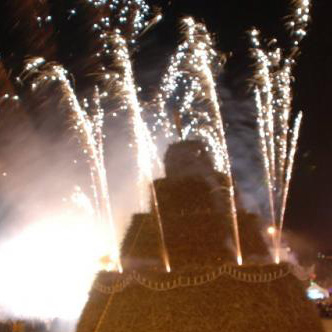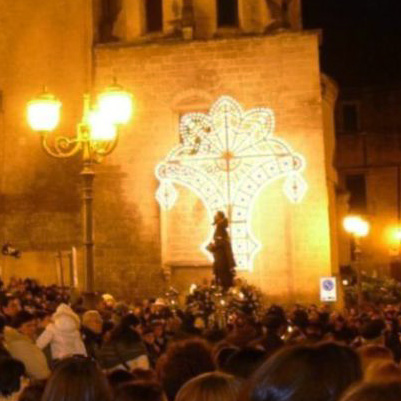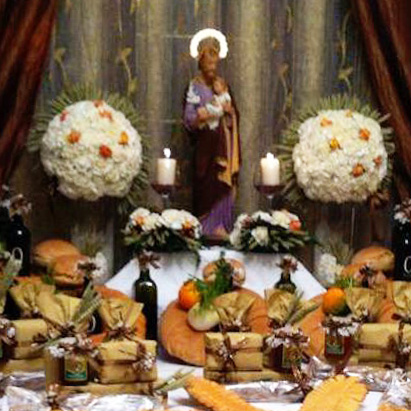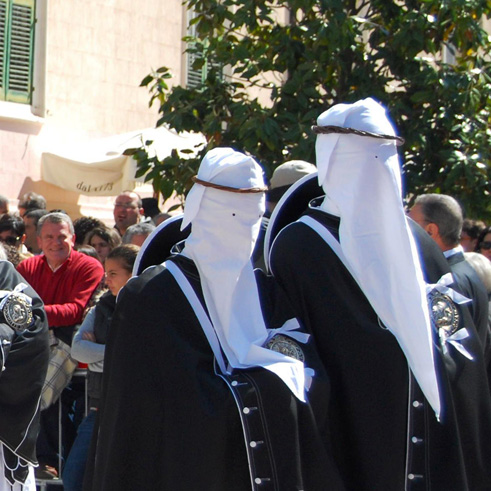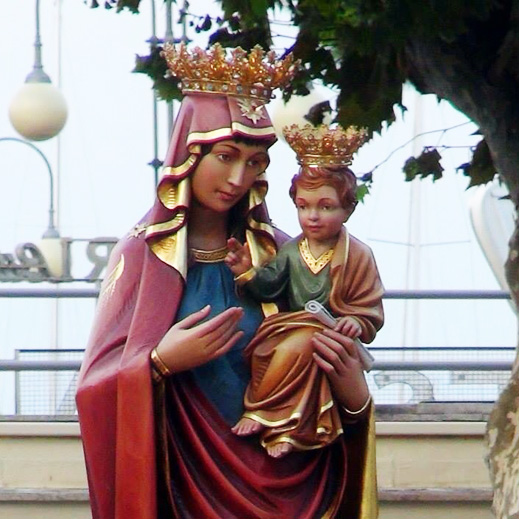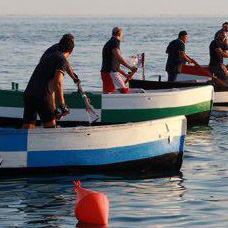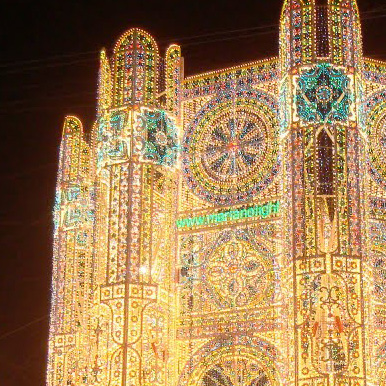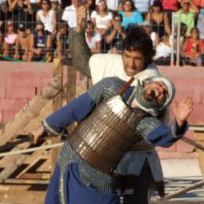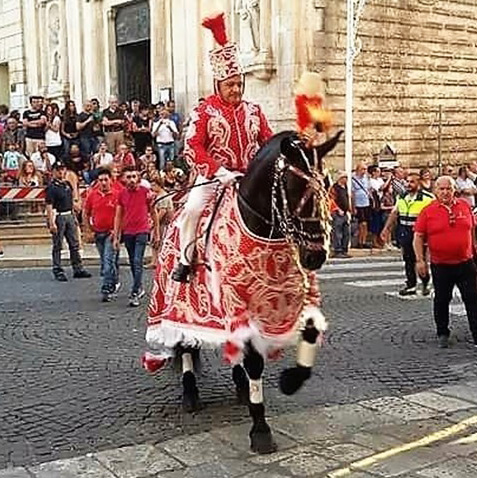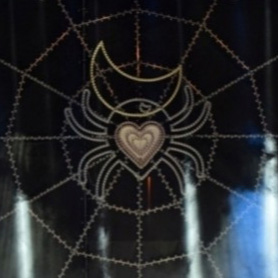Salento
Salento, or peninsula salentina, sometimes referred to as “The heel of Italy” in reference to the country’s boot–like shape, is the heart of Apulia, Italy’s south–easternmost region.
Salento has its core in the province of Lecce, – a Baroque Florence in Southern Italy – and reaches the provinces of Brindisi over the Adriatic Sea and Taranto on the Ionian Sea side. The inhabitants of this area differ from those of the rest of the region for their cultural and philological characteristics. Historically Salento belonged for many centuries to the ancient territory called “Terra d’Otranto”.
Landscape
Thanks to its plain, Salento has always been an agricultural area, producing, amongst others, olive oil (more than any other Italian region), in fact olive groves; characterized by their twisted trunks, stretch as far as the eye can see. Land properties are generally divided into small plots by typical dry low walls. Stone has always been used to make the various local structures without any binding mortar which farmers use to rest and to shelter their working tools. These kinds of buildings, are called, according to the area furnieddhi, pajare, ecc.) are more similar to Sardinian nuraghi then to Apulian trulli.
There are numerous fortified farmhouses dating back to the 16th, 17th and 18th centuries. In Salento small towns have a typical Mediterranean aspect and the whiteness of the houses makes them dazzling on sunny days. In a geographically poorly characterized landscape, they stand out from the countryside, dominated by the reddish color of a land where there is a high presence of iron, unlike the central–northern Puglia, where this blood color is much rarer. From a chromatic point of view the sea takes on a dark blue color if observed from the high cliffs overlooking the Adriatic Sea and more tenuous but varied in its nuances (emerald green, light green, light blue, etc.) if observed from sandy beaches or low cliffs of the Ionian Sea. Along the coastline of both seas there aren’t many towns or villages; it is possible though to admire many ancient coastal watchtowers, built over the centuries to protect people from pirate attacks.
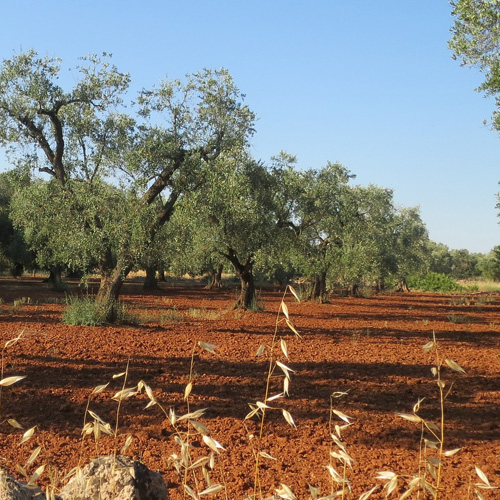
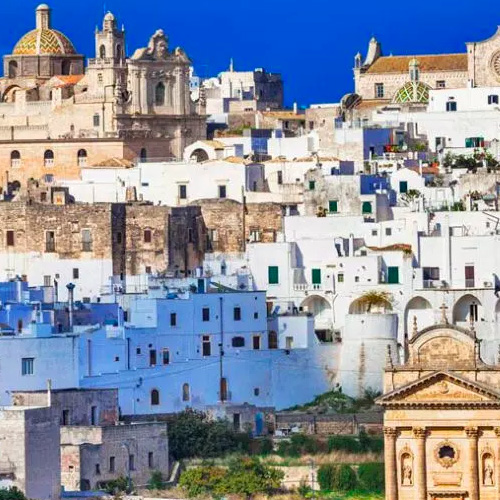
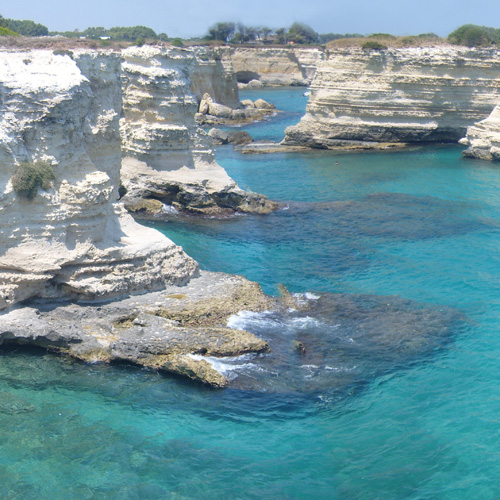
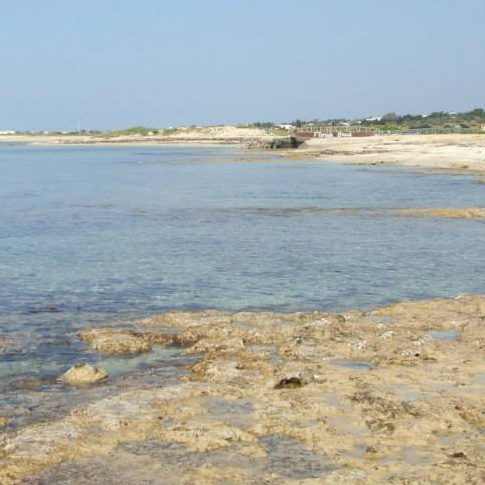
Architecture
Architecture in Salento recalls Greek towns for the dominant presence of roofless, white–washed houses made of stone, to be found especially along the coastline and in the countryside. The historical centres of the cities distinguish themselves for the richness of the Baroque Leccese style which turns the façades of churches and palaces into sculptured tapestries. This is mainly thanks to the famous stone, “pietraleccese”, and its warm yellow–pink colour. The typical structure of the historic centers of Salento, therefore, is characterized by a very compact style (there is no separation between the houses) of white alleys with revived whitewashed walls (with the exception of the city of Lecce and the area of Maglie, where also the houses of civil habitation are built in the white–rosacea stone coming from the quarries of Cursi); on whose walls stand the bright colors of the fixtures, interspersed with noble palaces and churches of the Baroque period in stone.
Typical are also the so called case a corte which have a Moorish origin. In this urban space, defined court (from the Latin cohorte, “space that includes the vegetable garden”, “fence”), the doors and windows of many houses overlook, with the desired result of making it a common living space, a sort of popular living room where, in the old days, many families lived much of the day chatting, embroidering and helping with the housework. In addition to the poor furnishing of potted plants, there is never a lack of the characteristic common pile in the court, a sort of stone wash–tub equipped with a grooved part (stricaturu) on which to wring the clothes. In some areas, even these courts are hidden by a door (mignano) that pretends to be the entrance of a house, revealing, once opened, the entrance of this multi–family space.
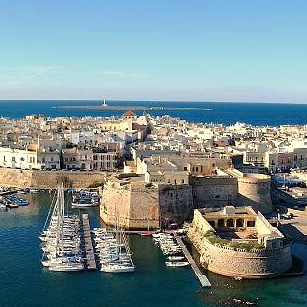
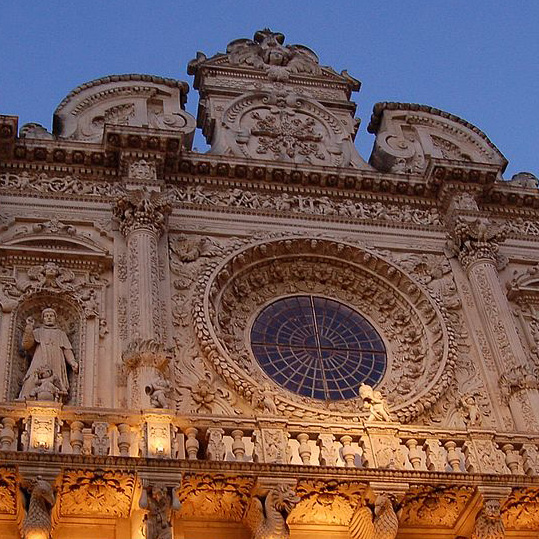
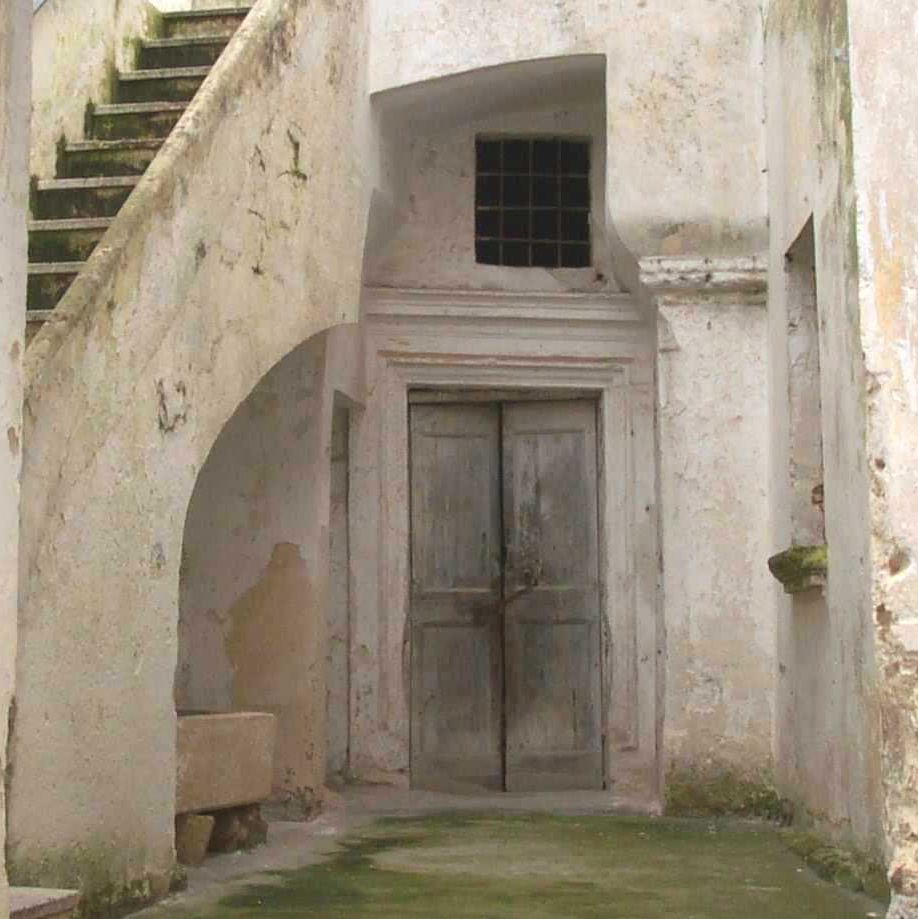
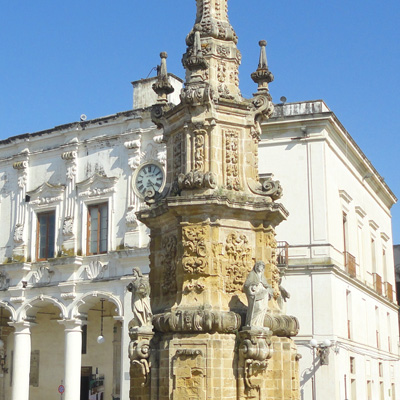
Food and wine
Salentine cuisine has many typical dishes whose main ingredients are fish and vegetables. It is a healthy, light and tasty cuisine, thanks to the herbs and spices, common to the area, the quality of the soil and the cleanliness and richness of the two seas. The cuisine goes together with famous DOC wines such as Negramaro or Primitivo di Manduria, an intense, heady red vinified both dry and sweet.
Among the most typical dishes are Pezzetti, chopped horsemeat in a spicy tomato sauce and Pitta, a tasty potato pie stuffed with ricotta cheese, vegetables and different kinds of sauces. There are also many kinds of bread, all baked in wood–fired ovens, using olive oil. Here we mention just “Puccia and Uliata” (bread enriched with black olives, onions, tomatoes and hot peppers). The king of Salentine summer meals is Friseddhe or Frise (barley or durum wheat dried bread) softened with water and dressed with fresh tomatoes, oil, herbs and seasonal vegetables.
Also spread are the Pittule (or Pettule), rough shaped fritters filled with turnips, pumpkin flowers, cod or without stuffing that are tasted soaked in cooked wine. Very well known are also Salentine pastries, more similar to Sicilian ones than to Apulian ones, among them we mention Pasticiotto leccese, a small delicious cream cheese pie, the Fruttone, the Bocche di dama, the Pasta di mandorla and the Spumone salentino. Also noteworthy is the Biscotto cegliese, a candidate for the recognition of a typical PDO (Protected Designation of Origin) product, based on toasted almonds, eggs and lemon peel, with a variation filled with black cherry or quince jam and covered with an icing made from sugar and cocoa, with almonds which come strictly from Ceglie Messapica.
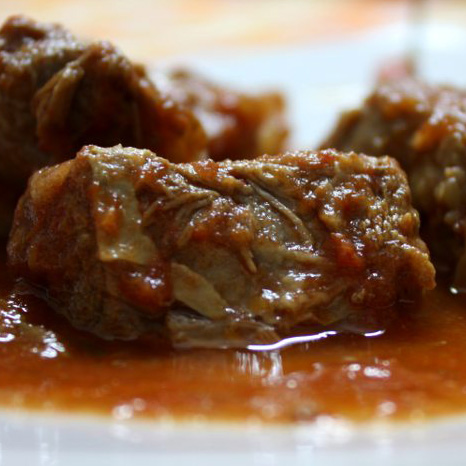

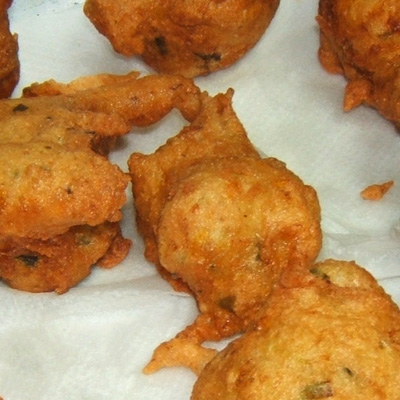
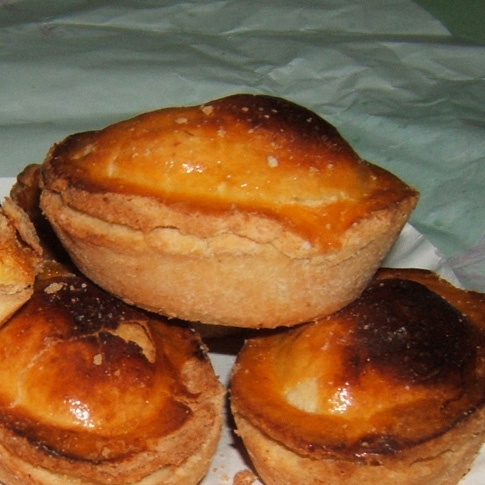
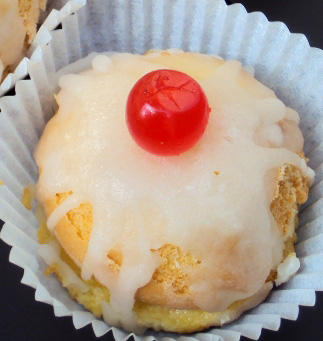
Salentine Festivals
Focara di Novoli (The Bonfire of Novoli, January 16–18): is the characteristic bonfire of the patronal festival of Sant’Antonio Abate, a monument of agricultural engineering made up of tens of thousands of bundles of vine shoots, which exceeds the height and the diameter of twenty meters, which is lit with a blaze of fireworks on the evening of January 16th. In the Days of Fire, there are also countless fireworks displays and competitions and you can admire the artistic exhibitions of the great lights.
Fuoco di San Ciro in Grottaglie (The Fire of San Ciro, last Sunday of January): a large pile of wood is set up in the square, to which it is set on fire. A procession is also held and there is a firework display.
Tavole di San Giuseppe (Tables of St. Joseph, 18–19 March) in Cocumola, San Marzano di San Giuseppe, Erchie, Uggiano la Chiesa, Giurdignano, Poggiardo, Avetrana e Lizzano: according to an ancient tradition the squares and houses of the village are open to visitors to admire the rich and colourful tables with sweets and traditional dishes, such as lu cranu stumpatu and the culli ciciri or the vermiceddhri, that is wheat and pasta with chickpeas. The ritual recalls the centuries–old tradition of hospitality typical of Salento.
The Settimana Santa in Taranto (Holy Week, March or April): is a suggestive and mystical series of rites that, moreover, sees the components of the two main Confraternities of the Church of Taranto competing to win the statues and the posts in the processions of Our Lady of Sorrows and Mysteries.
May of Madonna Odigitria at Villa Castelli (the entire month of May): the statue of the Virgin is carried in triumph along the streets of the city and is hosted from house to house for the whole month Mariano.
Palio di Taranto (Palio of Taranto, May and July): it is a traditional event in costume, it consists of a rowing boat race matched to the ten districts of the city. The trophy is awarded only after the two races that are held on 8th May and the third Sunday of July.
The Festa patronale di Santa Domenica in Scorrano (Patronal festival of Saint Domenica, from 5th to 7th July): the city’s patron saint, Santa Domenica is celebrated. During these days of celebration, the lighting companies challenge each other in the creation of elaborate parazioni (in the local dialect) or in constructing extravagant wooden buildings covered with thousands of light bulbs.
The Torneo dei Rioni di Oria (Tournament of the Districts of Oria, second week of August): on saturday there is a historical parade through the streets ending in the main square (Piazza Manfredi), with the presentation of the Palio. On sunday, in a purpousely equipped field, competitions are held for the award of the Palio. To win the Palio, the athletes of the four districts have got to reach the maximum score in five trials (ram, barrel chest, bridge tender, speed and agility), the order of performance is decided shortly before the tournament. There are also other races such as that of the fighting knights.
The Danza delle spade in Torrepaduli (Dance of Swords, 15th and 16th August): is a dance of the “Night of San Rocco” in which, at the urgent rhythm of the tambourines, couples of men mimic a duel by dancing and “braving” with their arms and hands.
Cavalcata dei Devoti in Ostuni (The Ride of the Devotees, 26 August): is an ancient rite of celebrations for the patron Sant’Oronzo. The Cavalcata di Sant’Oronzo is a parade of horses and riders, harnessed with caparisons and red uniforms full of embroidery and sequins. Of particular interest is also the holding of two fairs at the same time, during the three days of celebration.
Notte della Taranta in Melpignano (The Night of the Taranta, second half of August): is a festival of popular music of Salento, the pizzica “folk dance”, which takes place in various towns of the province of Lecce and Greece Salentina and has its highlight in August. The tour for the Salento countries ends with the great final concert of Melpignano, which lasts until late at night with tens of thousands of spectators. The main musical contribution is given by the popular “Notte della Taranta” orchestra.
